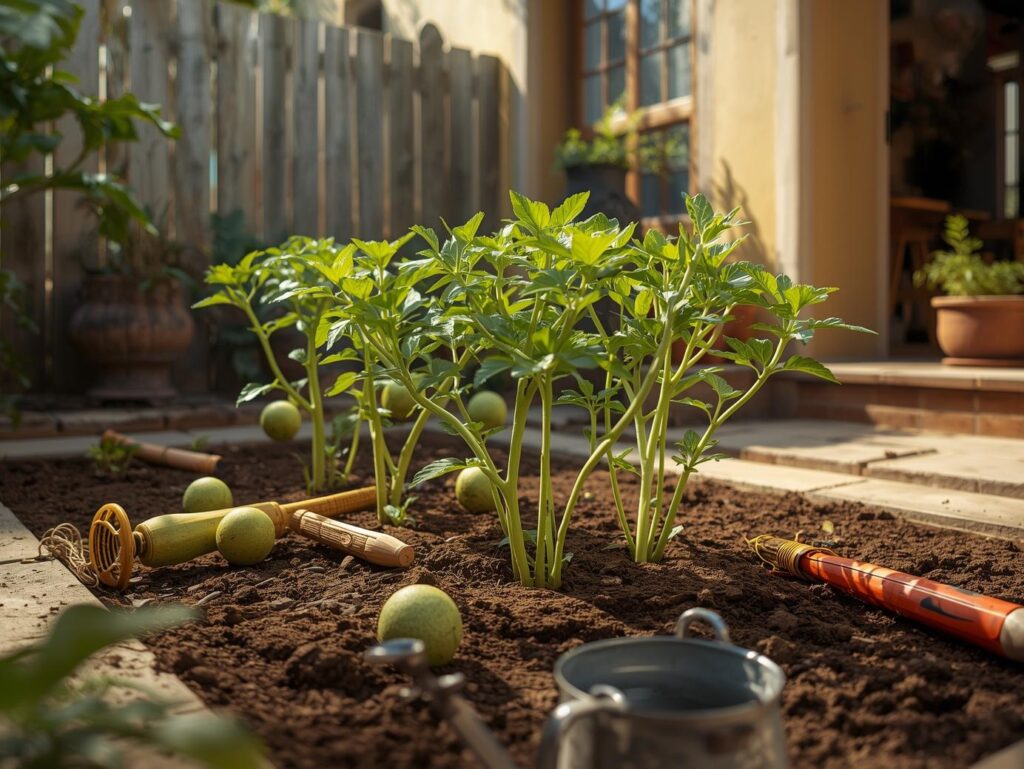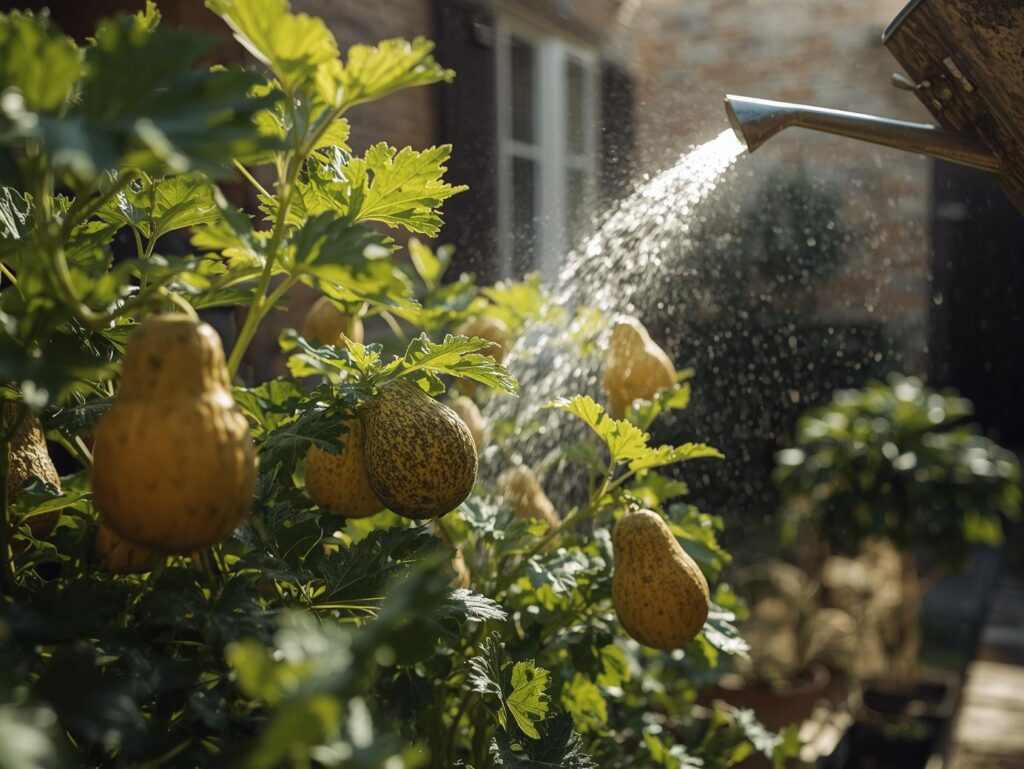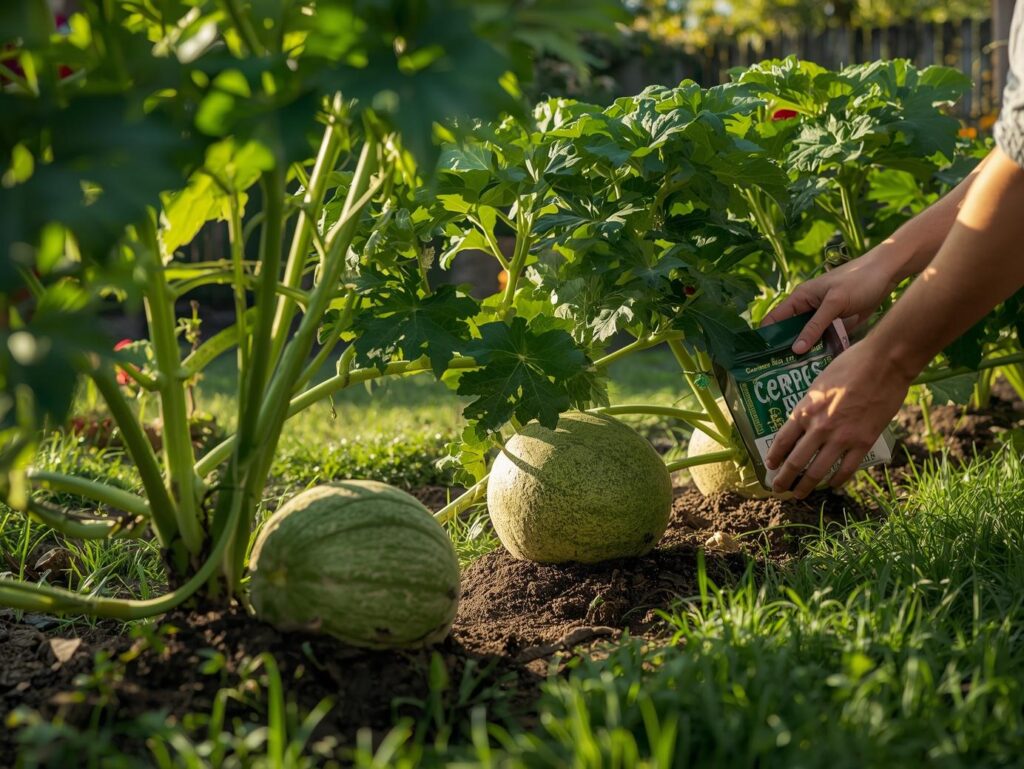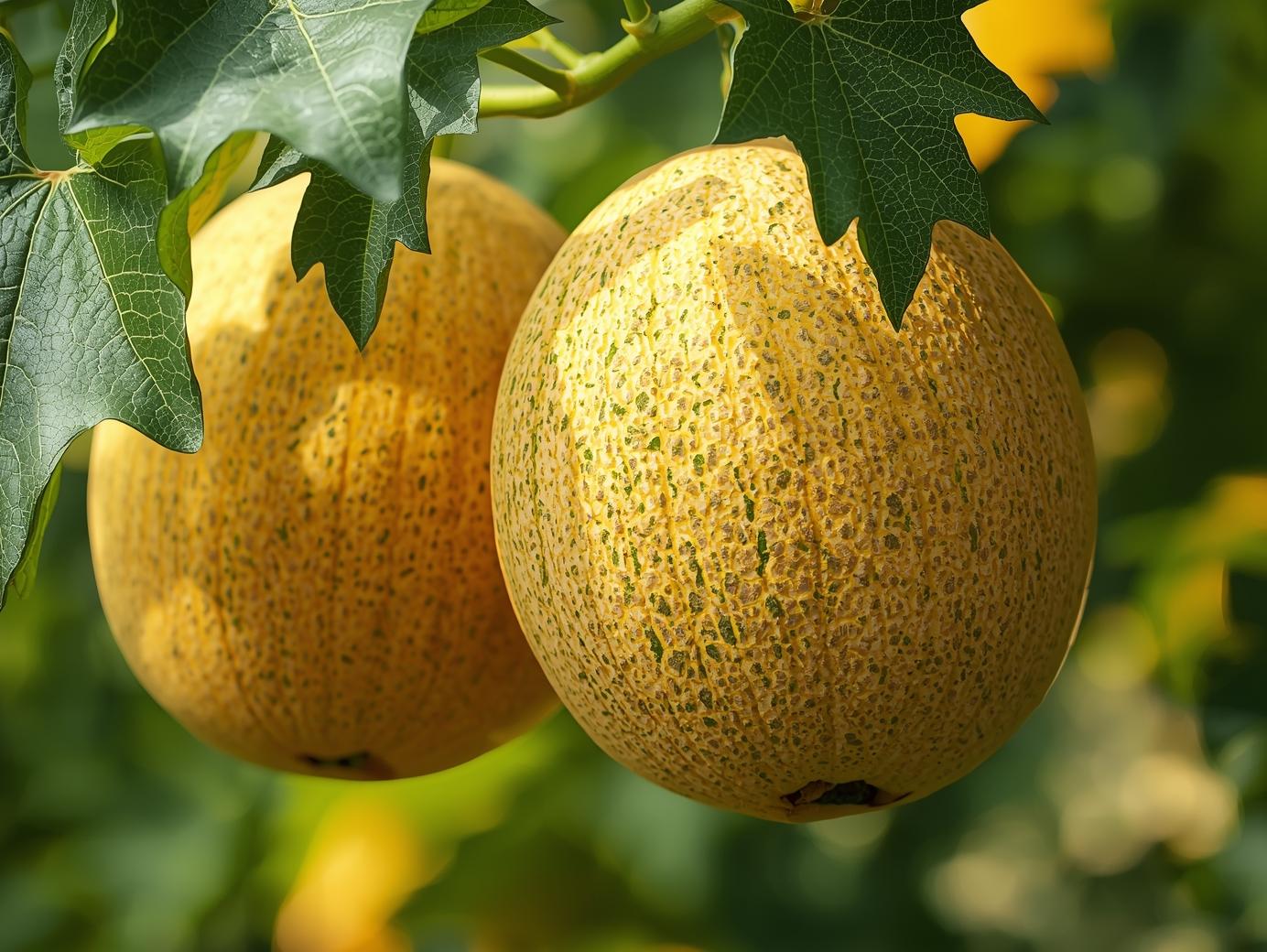Cantaloupe, also known as muskmelon, is a delicious and nutritious fruit that thrives in warm, sunny environments. Known for its sweet aroma, juicy flesh, and refreshing taste, cantaloupe is a favorite among home gardeners in the USA who enjoy growing their own fruit. With the right care and growing conditions, cantaloupe plants can flourish even in limited courtyard spaces, producing flavorful melons throughout the summer.
Whether you’re a beginner or an experienced gardener, cultivating cantaloupe at home offers both satisfaction and reward. These plants love warmth, require full sunlight, and do best in fertile, well-drained soil. With proper preparation, watering, and maintenance, you can enjoy a bountiful harvest of fresh, homegrown cantaloupes right from your backyard or courtyard garden.
Soil Selection
Cantaloupe plants prefer well-drained, sandy or loamy soil rich in organic matter. The ideal soil pH for growing cantaloupe ranges between 6.0 and 6.8, slightly acidic to neutral, which allows for optimum nutrient absorption. Good drainage is critical because standing water or heavy clay soil can lead to root rot and fungal problems. The soil should also be light and airy to support the plant’s extensive root system.
Before planting, improve your soil’s texture by adding compost or aged manure. This enhances both drainage and fertility while promoting microbial activity that benefits plant growth. If you are gardening in a courtyard with limited ground space, raised beds or large containers with high-quality potting mix can provide an ideal growing environment for cantaloupes.
Site Preparation
Selecting the right location for your cantaloupe plants is crucial. Choose a sunny spot that receives at least eight hours of direct sunlight daily, as cantaloupe thrives in warm conditions. The area should be open with good air circulation to prevent fungal diseases and ensure healthy vine growth. Avoid planting cantaloupe where other cucurbit family members like cucumbers, pumpkins, or squash were grown recently, to reduce the risk of soil-borne diseases.
Before planting, clear the site of weeds and debris. Loosen the soil to a depth of 12 to 15 inches and incorporate organic compost or well-rotted manure. If you live in a cooler region of the USA, consider using black plastic mulch to warm the soil before planting and help retain moisture. This step not only improves early growth but also boosts fruit development during the growing season.
Planting
Cantaloupe can be grown directly from seeds or transplants. In most parts of the USA, it’s best to sow seeds outdoors after the last frost date, when soil temperatures reach at least 70°F. Plant seeds about an inch deep, spacing them 2 to 3 feet apart in rows or mounds. Each mound should contain two to three plants to ensure good pollination and fruit set.

If using transplants, start seeds indoors four weeks before the last frost and carefully move them outdoors once conditions are warm. Handle the roots gently during transplanting, as cantaloupe seedlings are sensitive to disturbance. For courtyard gardening, large containers with trellises can support vertical growth, saving space while still allowing the vines to spread and produce high-quality fruit.
Watering
Consistent watering is key to healthy cantaloupe plants. During the early growth stages, water deeply and regularly to encourage strong root development. Keep the soil evenly moist but not waterlogged. Overwatering can cause fruit splitting or promote diseases like powdery mildew. Using drip irrigation or soaker hoses can help deliver water directly to the roots while keeping the foliage dry.

As the fruit begins to develop, gradually reduce watering to enhance sweetness and prevent the fruit from becoming waterlogged. Applying mulch around the plants helps retain soil moisture, regulate temperature, and reduce weed competition. Always water in the morning to allow the foliage to dry throughout the day, which minimizes the risk of fungal infections.
Fertilizing
Cantaloupe is a nutrient-hungry crop, so proper fertilization ensures strong growth and abundant fruit. Before planting, mix a balanced fertilizer rich in nitrogen, phosphorus, and potassium into the soil. Nitrogen supports leaf growth, phosphorus promotes root and flower development, and potassium enhances fruit size and sweetness.

Once the vines start spreading, switch to a fertilizer with lower nitrogen and higher potassium levels to encourage flowering and fruiting. Organic compost or fish emulsion can also provide a slow release of nutrients throughout the growing season. Avoid excessive nitrogen, as it can produce excessive foliage with fewer fruits. A balanced feeding schedule results in healthier plants and sweeter, more flavorful cantaloupes.
Pruning & Training
Training and pruning cantaloupe vines help manage space and improve fruit quality. In courtyard gardens, vertical trellising is an effective way to support vines while maximizing space. Trellised vines produce cleaner, more uniform fruits that are less prone to rot and pest damage. Secure the vines gently to the support structure and use soft ties to prevent damage.
Prune excess side shoots to direct energy toward fruit production. Once fruits begin to form, limit each vine to two or three fruits for better size and sweetness. Removing weak or overcrowded growth ensures that sunlight and airflow reach all parts of the plant, promoting healthier vines and reducing the chance of disease.
Pest & Disease Control
Common pests that affect cantaloupe include aphids, cucumber beetles, and spider mites. Regularly inspecting the plants helps detect early infestations before they become severe. Using natural pest control methods such as neem oil or insecticidal soap can effectively manage these pests without harming beneficial insects. Row covers can also help protect young plants from early pest damage.
Diseases such as powdery mildew, downy mildew, and fusarium wilt can affect cantaloupe, especially in humid conditions. To minimize risk, water at the base of the plant, ensure good air circulation, and rotate crops annually. Keeping your garden clean and removing diseased leaves or fruit promptly helps maintain a healthy growing environment.
Fruiting & Harvest
Cantaloupe plants begin producing fruit about 70 to 90 days after planting. Flowers appear first, followed by small melons that grow rapidly in warm conditions. Pollination is vital for fruit set, so encourage bees and other pollinators in your garden by planting flowering herbs nearby. As the melons mature, the rind color changes from green to beige, and the fruit emits a sweet aroma.
Harvest the cantaloupe when it easily separates from the vine with gentle pressure, a stage known as “full slip.” Avoid pulling or twisting the fruit, as this can damage the vine. Freshly harvested cantaloupe can be stored in a cool, dry place or refrigerated for several days. With proper care, your homegrown cantaloupe will reward you with juicy, aromatic fruit perfect for summer snacks and desserts.
